The sea, oceans, and humongous water bodies hold some of the world’s deepest secrets. When you scroll through the internet, you might find exciting videos about varying sea creatures. You hear about giant squids or the mythical Kraken.
But the question is, “Are any prehistoric sea creatures still alive?” The short answer is Yes. There are quite a few that are easily found and a few that aren’t.
We fear the modern sea and oceans filled with whales, sharks, and squids. However, nothing compares to some of the prehistoric (and a few mythical) sea creatures we have heard about growing up.
If you are fascinated to know more about these sea creatures, we have sorted out the top 8 that we think are worth knowing.
Here Are the Top 8 Prehistoric Sea Creatures Still Alive
Before you get your mind into thinking something too drastic or too mystical, let us reel you back in. Although we are talking about prehistoric sea creatures, remember that we are talking about the ones still alive to this day.
So, the following are the ones you should be aware of:
1. Jellyfish
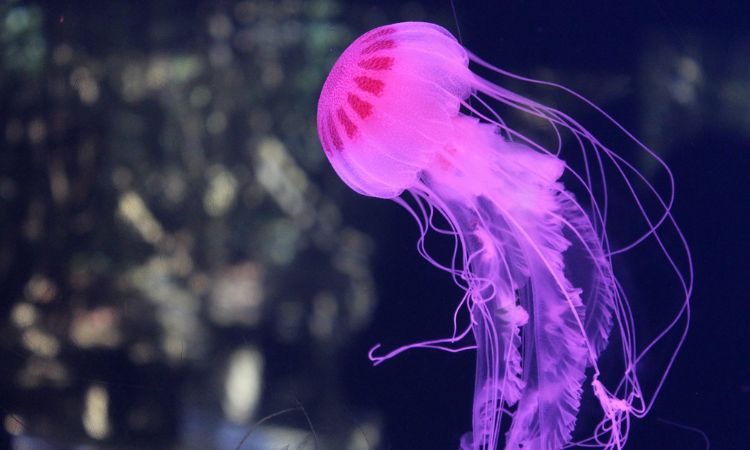
What we now know as Jellyfish was previously known as Sea Jellies. They are almost 500 million years old, so prehistoric is an apt way to describe them.
Their framework heavily depends on a basic workup of neurons that keeps them in tune with their surroundings. They are highly adaptable, one of the primary reasons they are tagged as prehistoric. And, chances are that their presence will be for a few more million years down the road.
They thrive in warmer temperatures and dead zones in the sea, which are often two reasons behind the depletion of marine life on Earth.
2. Horseshoe Crab
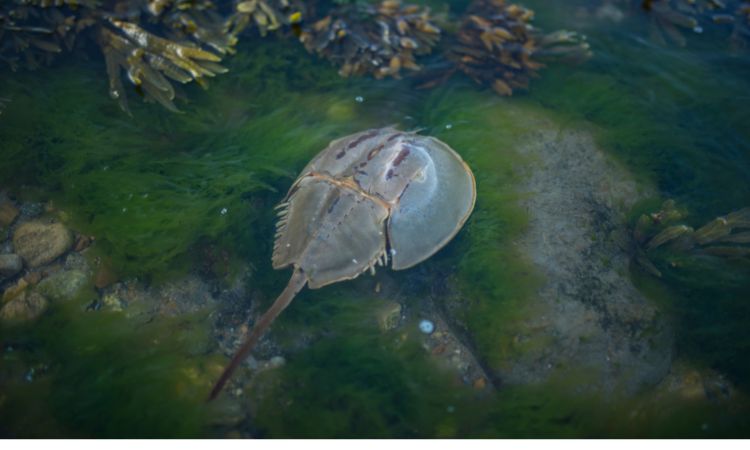
Categorized under the subphylum Chelicerata, horseshoe crabs aren’t real crabs. Their origin dates back to 450 million years ago, and they share the same family as scorpions, ticks, spiders, etc.
A single look at this sea creature will clear your doubt why it isn’t a real crab. It consists of three parts – prosoma (front leg), opisthosoma (back shell), and telson (tail). They have ten eyes in total and are pretty harmless, even if you encounter one in the wild.
What they are known for is their “blue blood.” They play a massive part in the field of medicine and toxicology.
3. Nautilus
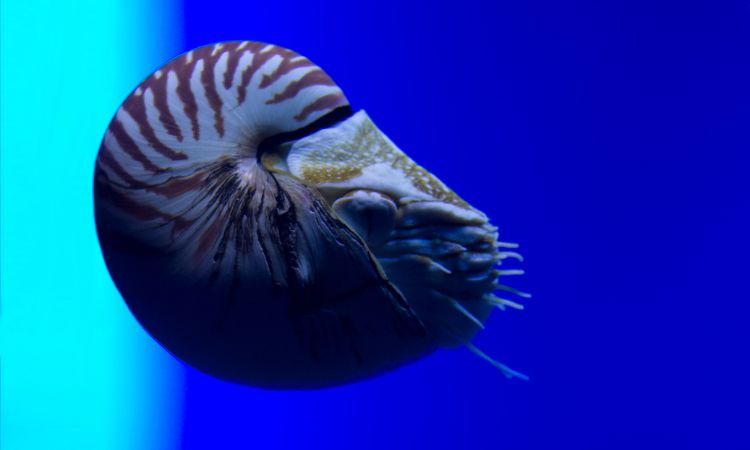
No, we aren’t talking about the submarine that we know was submerged under the City of Atlantis. We are talking about an actual sea creature with 500 million years of history. They are a type of mollusk that’s currently found in parts of the Pacific and Indian oceans.
What’s unique about these sea creatures is their retractable sucker tentacles, which they use for hunting their food in the sea.
They are found in a variety of colors and patterns. Still, they are at risk of overharvesting in the wild, which could affect the aquatic ecosystem in the future.
4. Coelacanth
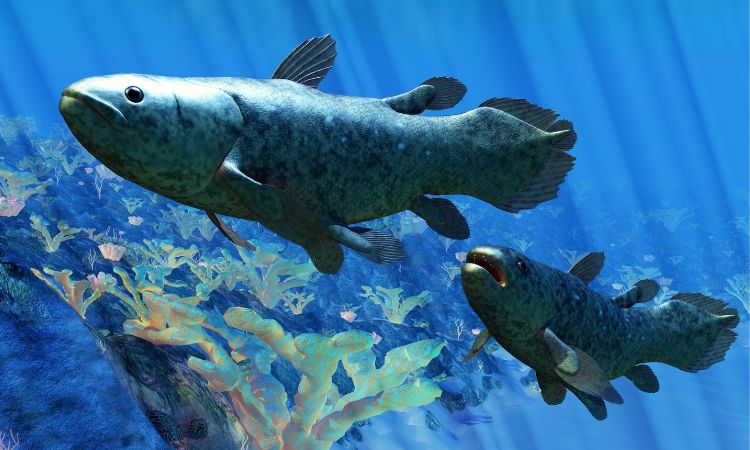
As difficult as it is to pronounce their name, Coelacanth isn’t very easily found in the wild. Although they were believed to be extinct 65 million years ago, they were again rediscovered in 1938.
The fish can grow up to six feet and live up to sixty years, which is uncommon for most species on Earth. What’s unique about them is their close resemblance to amphibians. Although they rely on fins for transportation, these fins often mimic the function of the front and hind legs in the creature.
They are among the few sea creatures (or possibly only ones) with a rostral organ. This isn’t found in vertebrates anymore.
5. Frilled Shark
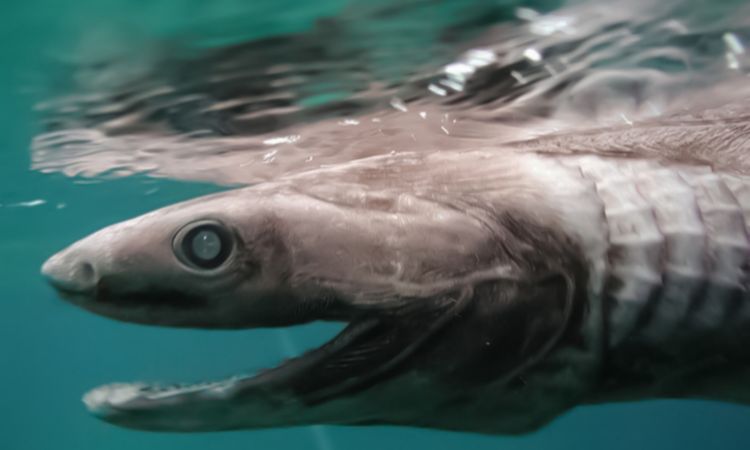
Compared to the other prehistoric sea creatures, which have lived for 400-500 million years, the Frilled Shark is a little new to the game. They have been around for 80 million years, approx.
Honing six gills, they have a lot of similarities to great whites and hammerheads. But the terrifying thing about these sea creatures is their 300 pin-sharp teeth. Their plunges are pretty deep, especially when they are hunting for food.
6. Lamprey
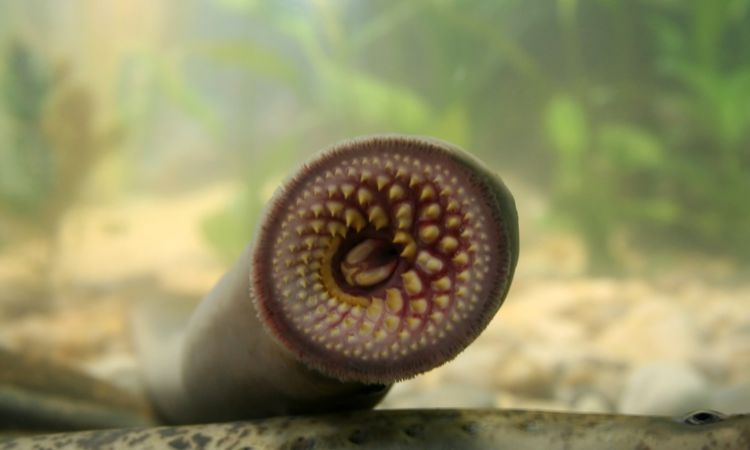
Despite being on the Earth for nearly 360 million years, Lamprey is possibly one of the most absurd-looking sea creatures. It is a type of parasitic fish.
They are made of a cartilaginous skeleton, so they don’t have any bones. Also, they have a single tail fin, which helps them feed off other fish.
Besides their intimidating appearance, you only need to know their tongue. They have multiple functions, especially when scraping off the scales and feeding on other fish.
7. Pygmy Right Whale
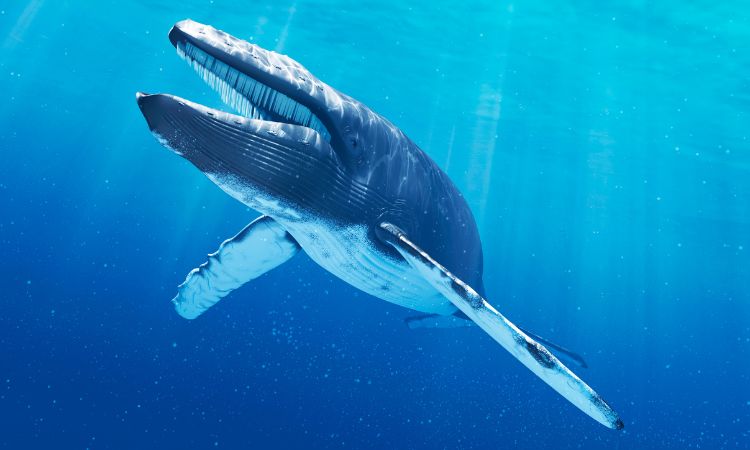
Considered an elusive creature, Pygmy Right Whale has been around for 23 million years. They aren’t predominant in the world, and their rarity makes them so fascinating.
Unlike most predominant whales, the Pygmy Right Whale is a lot smaller in size and measures up to 21 feet. They are believed to be inhabitants in the Southern Hemisphere, where there are cool waters.
Since they aren’t very common in the wild, scientists haven’t understood their behavior and habits.
8. Giant Stingray
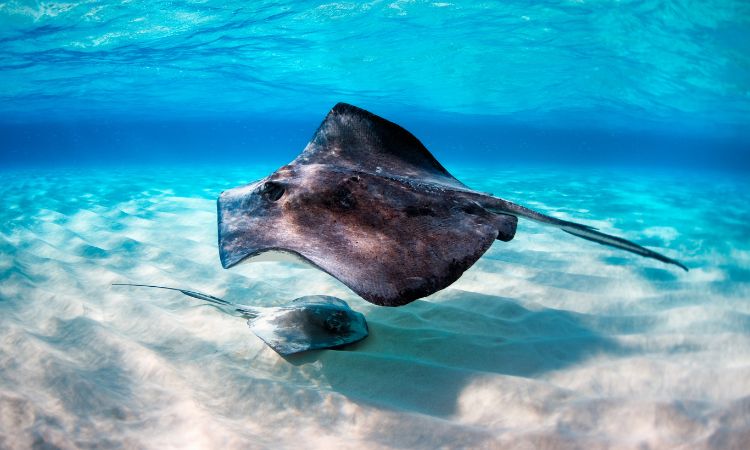
You won’t believe how powerful they are until you come across one. Not only is their giant appearance intimidating, but these sea creatures also have a poison spike in their tail, which is fatal.
They are found in the Mekong river in northern Australia and have been around for a few million years. Reports believe they have been around since the ice age and possibly before that too.
If you come across one in real life, you want to stay as far away as possible. They are notorious and not something you want to be the reason for your death in the wild.
Besides these prehistoric sea creatures, quite a few different ones are now extinct. Some of these include:
- Tylosaurus
- Megalodon
- Plesiosaur
- Mosasaurus
- Leedsichthys
- Kronosaurus
- Ammonite
- Basilosaurus
- Helicoprion
How many of these did you know?
Conclusion
And that concludes our list of the top prehistoric sea creatures that have lived for millions of years and are still around. Most of these creatures are not easily found in the wild, so your chances of coming across one are slim. But the next time you come across one, you’ll know how to recognize them.



